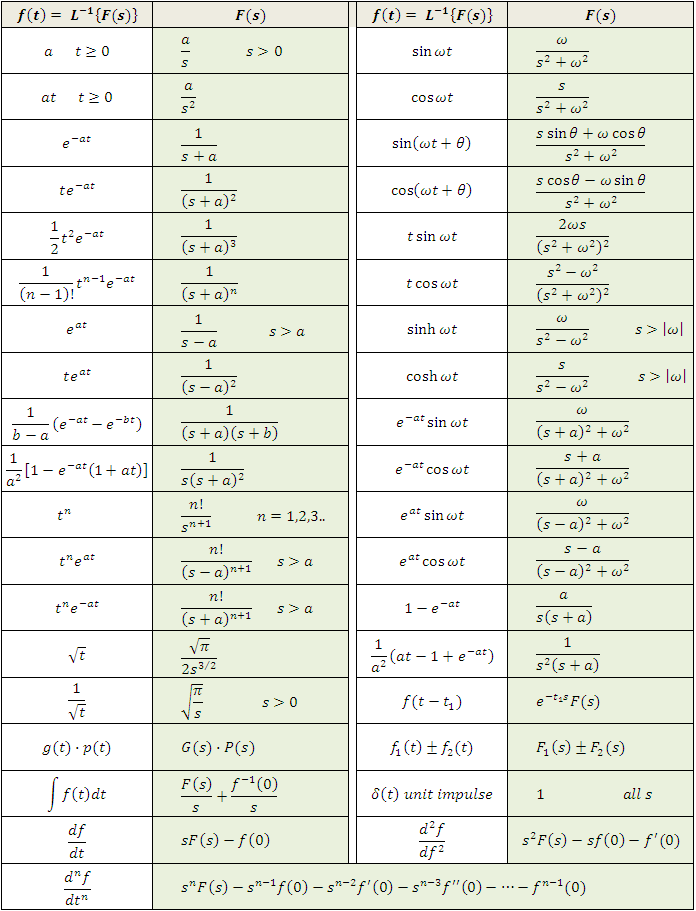Laplace Transform

|
If f(t) is a function of t, defined for all t > 0, the Laplace transform of f(t), denote by the symbol
L{ f (t) } is defined by: 
where s may be real or complex. In circuit applications we assume s = σ + jω.
The operation L{f(t)} transforms a function f(t) in the time domain into a
function F(s) in the complex frequency domain or simply the s domain.
|
Solved problems of Laplace transform

Solved problems of inverse Laplace transform

|
|||||||||||||
|
|||||||||||||
|
|||||||||||||
Laplace transform by partial fraction technique.
|
|||||||||||||
After aranging terms we get the following form:
 By comparing the coefficients we get the following set of linear equations:
Solving the set of linear equations we get: A = 1, B = 5, C =− 8, D = 0.75

|
|||||||||||||
Find the denominator roots (also called poles) and rewrite the polinomials as followes:
s3 + 2s2 + s + 1 = A(s3 + 10s2 + 29s + 20) + B(s + 4)(s + 5) + C(s + 1)(s + 5) + D(s + 1)(s + 4)
After arranging the powers of s we get the values:
s3 + 2s2 + s + 1 = (A)s3 + (10A + B + C + D)s2 + (29A + 9B + 6C + 5D)s + (20A + 20B + 5C + 4D)
The coefficients of s in the right and left side of the equation must be the same, now we have to solve the system of linear equations of 4 unknowns:
And the solutions of the coefficients are: A = 1 B = 0.0833 C = 11.667 D = − 19.75
|
|||||||||||||
Laplace transform tables































































